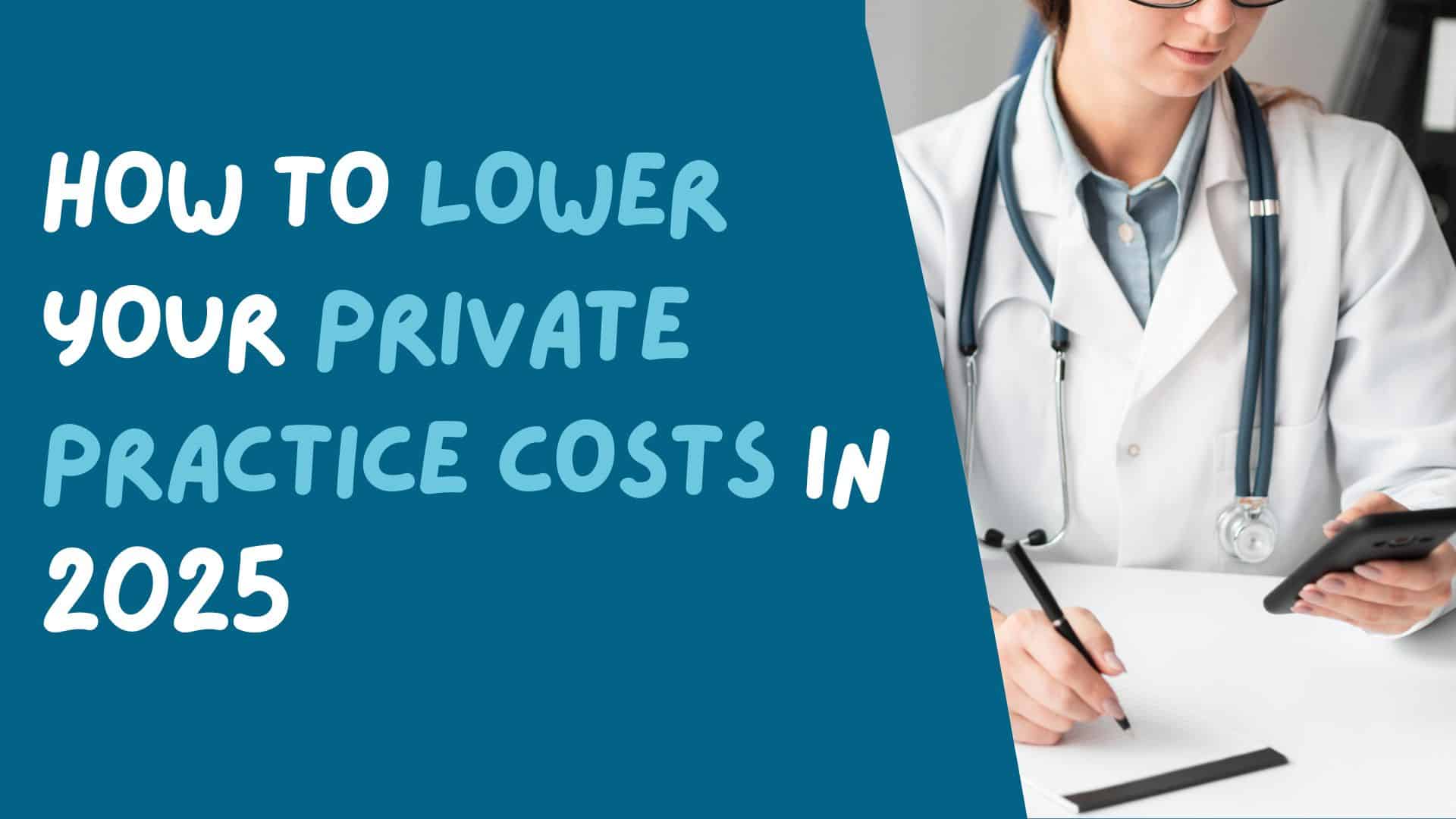Becoming a parent is a profound milestone, and for therapists in private practice, it can be especially meaningful. You spend so much of your time holding space for others; pregnancy and new parenthood invite you to extend that same compassion to yourself. Maternity leave isn’t just a pause from your practice; it’s a purposeful season of growth, healing, and bonding that strengthens you and, ultimately, your work with clients.
Taking this time for your family gives you the chance to recover physically, settle into new routines, and nurture the early connection with your baby. Planning maternity leave as a self-employed therapist takes some extra intention, but it doesn’t have to feel daunting.
With a little preparation, you can create a plan that supports your well-being and allows you to return to your clients feeling grounded and refreshed. We’ll walk you through how therapists can save for maternity leave.
Start By Mapping Your True Costs
The first step is to get crystal clear on what you’re actually spending on your expenses for each month. As a practice owner, you’re responsible for two big buckets: your personal living costs and the expenses that keep your business running.
Go through your bookkeeping reports from the last three months and write down everything. On the personal side, that might include your mortgage or rent, groceries, utilities, health insurance, childcare for older kids, and loan payments.
On the business side, it’s things like your office lease, your EHR and scheduling software, your phone and internet, malpractice insurance, licensing fees, and any bookkeeper or billing services you use. Add both numbers together, and that total is what you’ll need to cover while you’re out.
Decide How Long You Really Want To Be Away
One of the perks of being your own boss is that you can design your leave. Think honestly about how much time you want for recovery, bonding, and easing back into work. Twelve weeks is a common goal, but some therapists aim for three or even six months.
Whatever you decide will shape the size of the fund you need to build. This is also a good moment to consider whether you’ll keep paying for your office during leave or give it up temporarily to save money.
Factor In Any Coverage Costs
Once you know your base expenses and desired leave length, add any extra costs that will come up while you’re out.
Will you bring in another therapist to cover some or all of your caseload?
Will you keep subscriptions running?
Will you need extra childcare when you start easing back in?
Every practice looks different. Some owners trade off with a trusted colleague, so each covers the other’s clients. Others hire a contract or locum therapist, especially for telehealth sessions. For some clients, a brief check-in call might be enough until you’re back. Whatever you choose, estimate the cost and include it in your plan.
Build A Dedicated Maternity-Leave Fund
As you’re self-employed, this fund is your lifeline. Open a separate high-yield savings account and literally name it “Maternity Leave.”
Treat contributions to it like any other bill: move a set percentage of every client payment into that account. Automating the transfer means you don’t have to think about it, and you’re less tempted to spend the money elsewhere.
In your bookkeeping software, tag those transfers so your CPA can clearly see the reserve you’re building. Even if you start small, consistent deposits add up and give you a sense of control.
Use Insurance And State Programs Where You Can
Short-term disability insurance can replace part of your income, but you usually need to buy it well before pregnancy. If you already have a policy, check how much it will pay and when.
Some states also offer paid family leave programs that cover self-employed people who opted in early. If you’re not enrolled, you can still research whether you’re eligible or what’s required to opt in for the future. Knowing this now will help you set a realistic savings goal and could save you thousands of dollars.
Smooth Out The Revenue Dip
Since your income stops when sessions stop, think about ways to cushion the blow. You could offer prepaid packages so clients pay upfront for sessions they’ll use later. If you’ve been planning a rate increase, consider implementing it a few months before you leave to give your savings a boost. You might also decide to sublease your office or pause non-essential subscriptions during your time away. Each small step makes your cushion bigger and your return smoother.
Prep Your Clients Early
Give clients as much notice as you can.
A warm, simple message works best: let them know the dates you’ll be out and offer them options for rescheduling, brief telehealth check-ins, or referral to a covering clinician.
Update your online scheduler so that new clients don’t accidentally book while you’re away, and leave a note on your voicemail and website with your return date.
If another provider sees your clients, share only the minimum information needed through secure channels, and get client consent when possible. Clear, kind communication keeps relationships intact and reduces stress for everyone.
Keep Your Books Clean
Lost income, coverage costs, and insurance payouts all have tax implications. Make life easier by tagging all maternity-leave transfers and expenses in your accounting software. Keep invoices for any covering clinician as deductible business expenses. Record any insurance benefits separately so your CPA can advise you on taxes. Good bookkeeping now means no tax-time headaches later and helps you see precisely how your leave impacted your practice finances.
TL;DR: We’re Here To Help
Private practice owners don’t have HR or built-in benefits, but you can still take maternity leave without panicking. All it takes is some planning, so your leave feels like a joyful break, not a financial cliff.
At TL;DR Accounting, we specialize in helping therapists in private practice keep their books organized and simplify taxes, so they keep more of their hard-earned money.
Schedule a discovery call with us to get a clear view of your finances and a head start on saving up for maternity leave.





